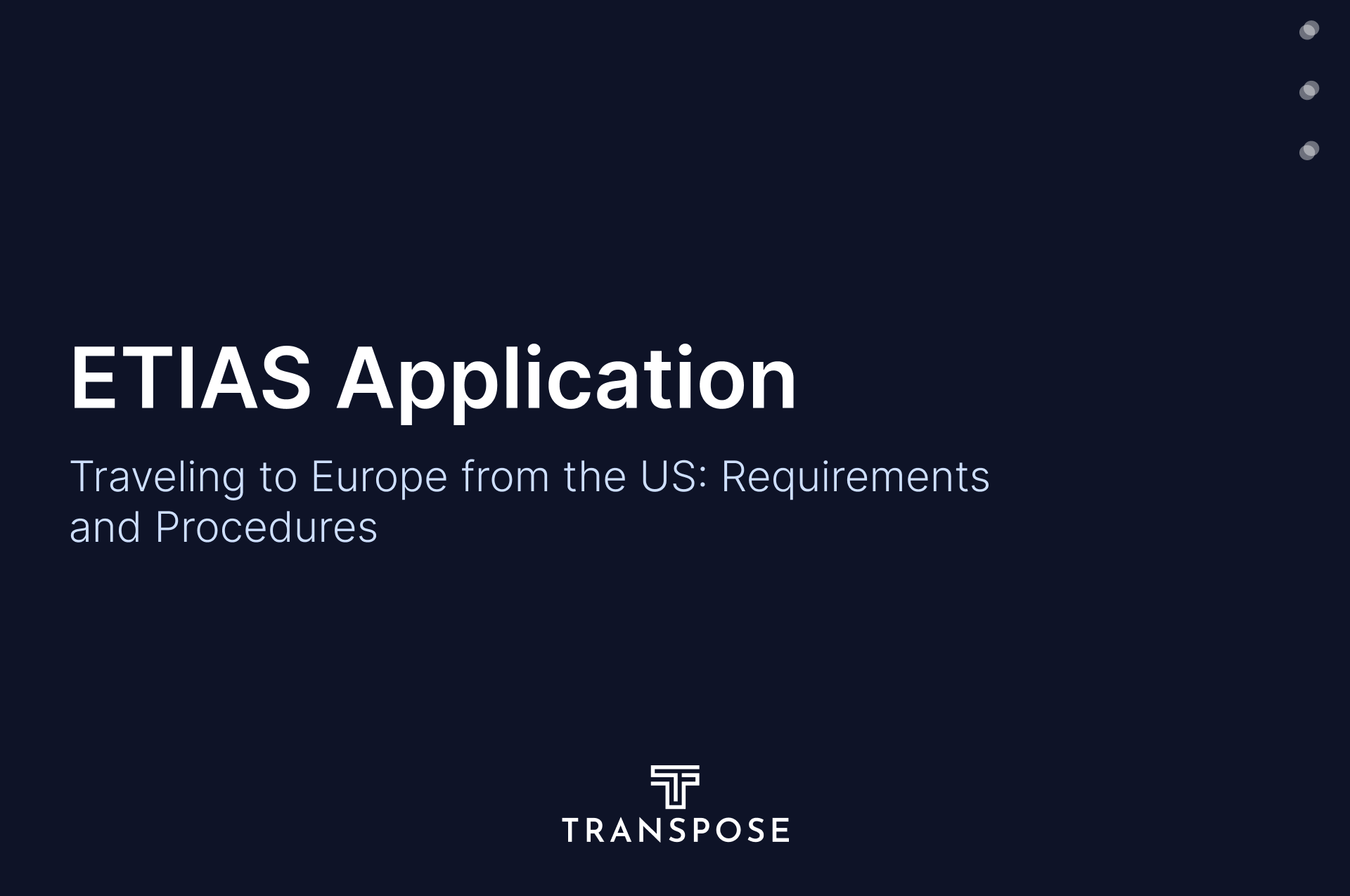Planning a trip to Europe from US? The European Travel Information and Authorization System (ETIAS) will soon change how Americans enter the Schengen Area.
This guide covers the documentation you'll need, the ETIAS application process, and how to ensure your travel documents meet European requirements.
What is ETIAS and why does it matter for US travelers?
ETIAS is a pre-travel authorization system that screens visitors from visa-exempt countries before they enter the Schengen Area. It functions similarly to the US ESTA system but applies to European travel.
The system requires US citizens to obtain electronic authorization before boarding flights to Europe.
Key ETIAS Benefits
- Valid for three years from approval date
- Covers 30 European countries in one application
- Electronic linking to your passport eliminates paper documents
- Fast online application process
Essential Documents for Europe Travel
US travelers need specific documentation to meet ETIAS requirements and European border control standards. Gathering these documents early prevents last-minute complications.
ETIAS Required Documentation
- Valid US machine-readable passport (must remain valid throughout your stay)
- Active email address for receiving ETIAS approval
- Credit or debit card for €20 application fee
- Supporting business documents (if traveling for work)
When Document Translation is Required for ETIAS
In most cases, European authorities won’t request translated documents at the border for ETIAS itself, since ETIAS applications generally require only passport and personal info. But for visa or long-stay permit applications, translations are often required. Documents like business contracts, employment letters, or medical records may need certified (or sworn) translation to satisfy national immigration rules.
ETIAS Application Process: Step-by-Step Guide
The ETIAS application takes approximately 10-15 minutes to complete online. Most applications receive approval within minutes, though complex cases may require up to four weeks for processing.
Step 1: Verify Eligibility Requirements
Confirm you meet the criteria before starting your application. US citizens traveling for tourism, business, transit, or medical visits for up to 90 days within a 180-day period qualify for ETIAS.
Step 2: Complete the Online Application
The application requests personal information, passport details, travel plans, and background questions about health and security. Answer all questions accurately to avoid processing delays.
You can apply for ETIAS online. Before you start, make sure you have:
- Valid Passport: Must be valid for at least 3 months after leaving the Schengen Area and have a machine-readable zone (preferably with a biometric chip).
- Email Address: You’ll receive your approval or updates here, so use one you check often.
- Payment Method: A credit or debit card to pay the €20 fee.
- Personal Details: Full name, date of birth, nationality, and passport info.
- Travel Plans: Your first destination in the Schengen Area may be requested.
- Security & Health Info: Questions about your background, travel history, and health to confirm eligibility.
Step 3: Submit Payment and Wait for Approval
Pay the €20 fee (approximately $23) for applicants aged 18-70.
Most approvals arrive via email within minutes, though document verification may extend processing to several weeks in rare cases.
New Entry Requirements Beyond ETIAS
ETIAS authorization doesn't guarantee entry into Europe—border officials still conduct standard immigration checks. Additional requirements may apply depending on your travel purpose and destination country.
Medical providers sending staff to European conferences should prepare documentation proving legitimate business purposes to support ETIAS applications.
Business Travel Documentation
- Company invitation letters or conference registration
- Proof of accommodation and return flights
- Business registration documents (may require translation)
- Financial statements showing sufficient funds
What Happens if You Travel Without ETIAS
Airlines may deny boarding to passengers without a valid ETIAS once it becomes mandatory (likely in late 2026).
Note: ETIAS is not currently active (as of 2025) and the planned start is in the last quarter of 2026.
Special Circumstances and Exemptions
Certain travelers don't need ETIAS despite holding US passports. Understanding these exemptions helps determine the correct authorization pathway for your specific situation.
Who Doesn't Need ETIAS
Travelers holding valid Schengen long-stay visas or residence permits don’t need ETIAS. ETIAS is an authorization for visa-exempt travelers. If someone already holds a Schengen visa (long stay) or holds a residence permit, they are typically exempt from needing ETIAS.
Long-Term Stay Requirements
Business expansions, long-term projects, or study programs exceeding 90 days require a traditional visa or permit, not ETIAS.
The visa application process involves more extensive documentation, including translated supporting documents.
Document Translation for European Travel
European authorities increasingly require translated versions of business documents, especially for visa applications or extended stays. Proper translation ensures compliance with local regulations and prevents entry complications.
Operations managers should identify translation needs during travel planning to avoid delays at critical business junctions.
Common Documents Requiring Translation
- Business registration certificates
- Employment contracts and authorization letters
- Medical records for health-related travel
- Academic credentials for conference presentations
- Financial statements and bank letters
Certification Standards for Official Use
European authorities often require certified or sworn translations (sometimes with apostille). Translation requirements vary by country, and many use “certified” or “sworn” translation standards rather than a specific ISO standard.
Your legal team can determine the appropriate certification level based on document use and destination country requirements.
Services & Resources to Explore
- Which Documents Need Legal Translation? [2025] - Comprehensive guide to translation requirements
- Sworn, Notarised, Certified, and Official Translations - Understanding certification types
- ISO 17100 vs ISO 18587: Key Differences - Translation quality standards explained
